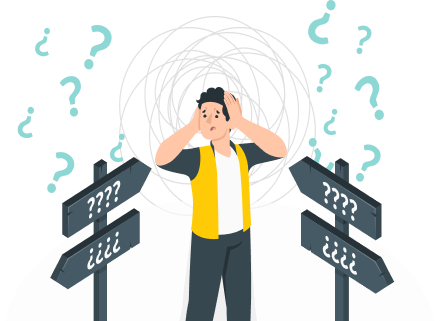#TakeCharge with #Aimshala
How make a career in Lighting Designer
A career as a Lighting Designer in the healthcare industry involves creating effective lighting solutions that enhance patient comfort, safety, and the overall experience within medical facilities. To pursue this career path, individuals typically need a strong educational background in lighting design, architecture, or a related field. A bachelor's degree is essential, often followed by specialized training or internships in healthcare environments. Gaining practical experience through projects that involve healthcare settings, as well as understanding the specific lighting needs of hospitals and clinics, is crucial. Networking with professionals in the field and staying updated with advancements in lighting technology and design standards are also important. With a combination of education, experience, and a passion for design, one can build a fulfilling career as a Lighting Designer in healthcare.
Career in Lighting Designer
What are the roles and responsibilities in Lighting Designer?
- Designing Lighting Plans : Lighting Designers create comprehensive lighting plans that meet the specific needs of healthcare environments, ensuring optimal visibility and comfort.
- Collaboration with Architects : They work closely with architects and interior designers to integrate lighting solutions into the overall design of healthcare facilities.
- Conducting Site Assessments : Lighting Designers perform site assessments to evaluate existing lighting conditions and identify areas for improvement.
- Selecting Lighting Fixtures : They select appropriate lighting fixtures and technologies that enhance the functionality and aesthetics of healthcare spaces.
- Staying Updated on Regulations : Lighting Designers ensure compliance with health and safety regulations, as well as standards specific to healthcare environments.
What education is required to study Lighting Designer
Check out the dates of the total number of candidates who have appeared in the CUET 2022 exam from the below table.
Stream |
Graduation |
After Graduation |
After Post Graduation |
|
|
Path 1 |
Completion of high school with a focus on science and arts subjects. |
Bachelor of Science in Lighting Design, Architecture, or Interior Design. |
Master's degree in Lighting Design or a related field. |
Certifications in lighting design or energy-efficient lighting practices. |
|
Path 2 |
Completion of high school with emphasis on design and technology. |
Bachelor's degree in Environmental Design or Architecture. |
Master's degree in Architectural Lighting Design or related fields. |
Professional certifications in sustainable design or healthcare design. |

Feeling unsure about
your future?
Let's find the perfect career path for you!
with AI-powered career
guidance

What are the key skills required for Lighting Designer
- Creativity - Creativity is essential for developing innovative lighting solutions that enhance the aesthetics and functionality of healthcare spaces.
- Technical Skills - Proficiency with lighting design software and an understanding of lighting technologies are crucial for effective design.
- Communication Skills - Strong communication skills are vital for collaborating with architects, contractors, and healthcare professionals.
- Problem-Solving Skills - The ability to identify and address challenges in lighting design, especially in complex healthcare environments, is essential.
- Project Management Skills - Managing design projects efficiently, including timelines and budgets, is key to successful outcomes in lighting design.
What are the career opportunities in Lighting Designer?
- Architectural Lighting Designer - Architectural Lighting Designers focus on creating lighting solutions for various building types, including healthcare facilities.
- Interior Designer - Interior Designers work on the overall aesthetics of spaces, including lighting as a key component of design.
- Lighting Consultant - Lighting Consultants provide expert advice on lighting systems and strategies for various projects, including healthcare.
- Electrical Engineer - Electrical Engineers design and implement electrical systems, including lighting, for healthcare facilities.
- Sustainable Design Specialist - Sustainable Design Specialists focus on creating energy-efficient lighting solutions for healthcare and other sectors.
What is the salary and demand for Lighting Designer?
- Salary Overview - The typical salary for Lighting Designers ranges from $45,000 for entry-level positions to over $90,000 for experienced professionals, with variations based on education and location.
- Regional Salary Variations - Salaries can vary significantly by region; for example, Lighting Designers in urban areas or regions with high healthcare infrastructure may earn more than those in rural settings.
- Current Job Market Demand - The demand for Lighting Designers is increasing due to the growing emphasis on patient-centered design and the need for efficient lighting in healthcare settings.
- Future Demand Projections - Future demand for Lighting Designers is expected to rise as healthcare facilities continue to prioritize enhanced patient experiences and sustainable design practices.
Leading companies for careers in Lighting Designer

Arup Group

Gordon Gill Architecture

Fisher Marantz Stone

L'Observatoire International

HLB Lighting Design

Auerbach Pollock Friedlander

Studio KDA

LightLab
What are the best colleges for Lighting Designer in India?
Undergraduate
College |
Location |
Website |
|
National Institute of Design |
Ahmedabad |
https://www.nid.edu |
|
Indian Institute of Technology Bombay |
Mumbai |
https://www.iitb.ac.in |
|
National Institute of Fashion Technology |
New Delhi |
https://www.nift.ac.in |
|
Panjab University |
Chandigarh |
https://www.puchd.ac.in |
|
Indian Institute of Technology Delhi |
New Delhi |
https://www.iitd.ac.in |
Postgraduate
College |
Location |
Website |
|
National Institute of Design |
Ahmedabad |
https://www.nid.edu |
|
Indian Institute of Technology Delhi |
New Delhi |
https://www.iitd.ac.in |
|
Indian Institute of Technology Bombay |
Mumbai |
https://www.iitb.ac.in |
|
Srishti Institute of Art, Design and Technology |
Bengaluru |
https://www.srishti.ac.in |
|
L. S. Raheja School of Art |
Mumbai |
https://www.lsrahejaschoolofart.com |
What are the best colleges for Lighting Designer in Abroad?
College |
Location |
Website |
|
Rhode Island School of Design |
Providence, Rhode Island, USA |
https://www.risd.edu |
|
Savannah College of Art and Design |
Savannah, Georgia, USA |
https://www.scad.edu |
|
Central Saint Martins |
London, United Kingdom |
https://www.arts.ac.uk/csm |
|
Wageningen University & Research |
Wageningen, Netherlands |
https://www.wur.nl |
|
Parsons School of Design |
New York, New York, USA |
https://www.newschool.edu/parsons |
What are the top entrance exams in India for pursuing a career in Lighting Designer
College |
Tentative Date |
UG/PG |
Important Elements |
Website |
|
National Institute of Design |
April |
Undergraduate |
Design Aptitude, General Knowledge, and English. |
https://www.nid.edu |
|
Indian Institute of Technology Bombay |
January |
Postgraduate |
Design, Engineering, and Analytical Skills. |
https://www.iitb.ac.in |
|
Srishti Institute of Art, Design and Technology |
May |
Postgraduate |
Creative Thinking, Design Theory, and Portfolio Review. |
https://www.srishti.ac.in |
|
Indian Institute of Technology Delhi |
February |
Postgraduate |
Design, Technical Skills, and General Knowledge. |
https://www.iitd.ac.in |
|
Parsons School of Design |
March |
Undergraduate |
Portfolio Submission, Design Aptitude, and Interview. |
https://www.newschool.edu/parsons |
Pros & Cons of a Career in Lighting Designer
Pros
- Lighting Designers play a vital role in enhancing patient experiences and safety in healthcare settings.
- The field offers competitive salaries, especially for those with advanced training and experience.
- Professionals in this field contribute to the overall design and functionality of healthcare environments, making their work impactful.
- The career provides opportunities for continuous learning and collaboration with other design and healthcare professionals.
Cons
- The job can be demanding with tight deadlines, especially during project completions.
- Some roles may require extensive travel to project sites, which can be tiring.
- Funding uncertainties in design projects can lead to job instability or limited resources.
- The work can sometimes be isolating, especially during the design and planning phases.
Did you find this information helpful?


Report
0 out of 0 found this helpful


